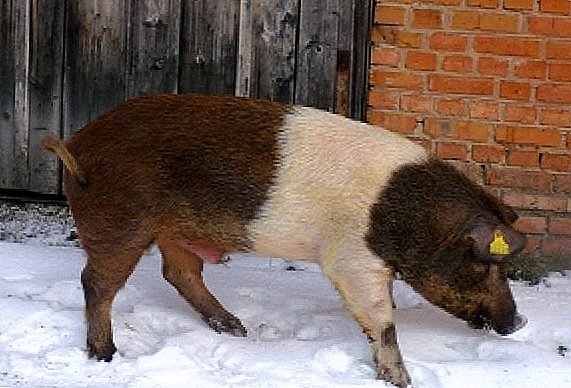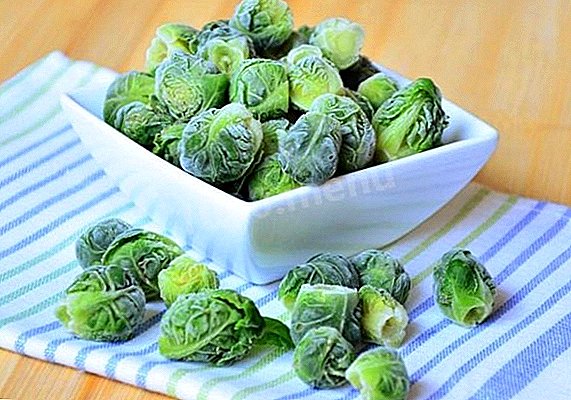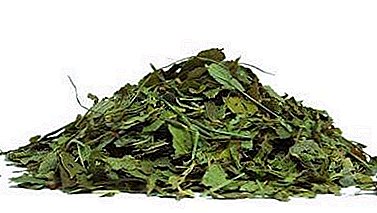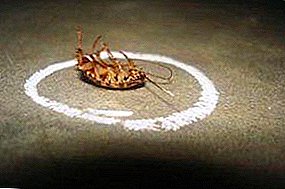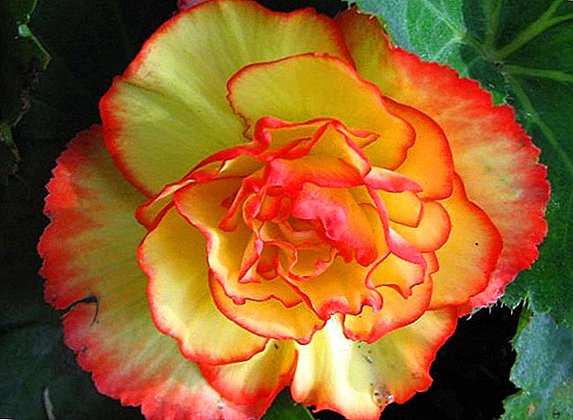 Among all the indoor plants, cacti are among the most picky people. Despite the fact that their appearance may not seem as attractive as the exterior of the other green inhabitants of the window sill, many gardeners prefer them. Therefore, if you want to acquire this plant at home, then knowledge of the methods of reproduction of the cactus will be very useful.
Among all the indoor plants, cacti are among the most picky people. Despite the fact that their appearance may not seem as attractive as the exterior of the other green inhabitants of the window sill, many gardeners prefer them. Therefore, if you want to acquire this plant at home, then knowledge of the methods of reproduction of the cactus will be very useful.
There are several ways of breeding cactus, the simplest of which are the use of cuttings and children from adult plants. Vegetative reproduction of a cactus is not such a complicated process as it may seem at first glance, and now you are convinced of this.
Reproduction of cacti cuttings
Plant cuttings are used in cases where it is necessary to quickly increase their number, save the diseased specimens, or dilute any decorative form. Reproduction of cacti by cuttings will not take you much time, but before the procedure, you must take into account some of the nuances.
When cutting cacti
 Not all months of the year are equally well suited for this task. Experts recommend cutting the cuttings either in spring or in summer, since with the onset of autumn and in winter, most of the plants are at rest. If you ignore this recommendation and cut the stalk, then he himself will not suffer and, most likely, will even take root, but the mother plant may die.
Not all months of the year are equally well suited for this task. Experts recommend cutting the cuttings either in spring or in summer, since with the onset of autumn and in winter, most of the plants are at rest. If you ignore this recommendation and cut the stalk, then he himself will not suffer and, most likely, will even take root, but the mother plant may die.
However, in some cases, without this procedure is simply not enough. For example, there are cases when a plant slowly dies and in order to save at least something, you have to graft the top of the head.
When it is worth cutting a cactus
Before you learn how to multiply the cactus at home, it is worth deciding whether you need this process at a particular point in time. There is a certain set of situations when grafting a plant would be appropriate. So, if the stalk at the cactus is one, then the procedure should be carried out:
- when he is too long and ugly;
- when the main part of the plant is not just long, but it can simply drop the pot;
- when the upper part of the cactus rests on the shelf or frame of the window and it has little space;
- the stem has stung heavily in the lower part or the roots of the plant have begun to rot.
How to conduct cutting cacti
Before proceeding to the cutting of the cactus, you should prepare all the necessary tools and materials. First of all, you will need a good sharp knife, for the role of which a stationery tool with a thin blade and a smooth edge or a razor blade is perfect. You should also prepare alcohol for disinfection, crushed charcoal, plant soil, a pot or stove with drainage holes, a few pebbles and large plastic tweezers (an element from a toy set or kitchen tongs with silicone linings will do).
As for the process of propagation by cuttings, it takes place in the following order. To begin, select the mother plant that is going to cut and determine the exact location of the cut. 
Important! If the cactus has a rotting stalk, then only its healthy part can be cut.After that, take the pre-selected tool (razor or knife) and wipe its blade with alcohol.
Now, by capturing the cactus behind the crown with tweezers or kitchen tongs (you must act very carefully so as not to break the thorns) you can cut off the desired part of the stem. If you do not have tweezers or kitchen tongs under your arms, you can also use a paper cord: a sheet of paper is folded in several layers and simply wrapped around the stem of the plant several times.
 After the cutting is in your hands, put it on a clean sheet of paper (on its side) and leave it in a shady, cool place for 2-4 days, during which the cut dries out a bit. In the case when the cutting was cut from a diseased plant, it is better to immediately sprinkle it with pounded charcoal, leaving it even in one plane, but in some cases it is better to sharpen the cut as a pencil. During vegetative propagation of plants in this way, pointed cuttings form strong roots much faster.
After the cutting is in your hands, put it on a clean sheet of paper (on its side) and leave it in a shady, cool place for 2-4 days, during which the cut dries out a bit. In the case when the cutting was cut from a diseased plant, it is better to immediately sprinkle it with pounded charcoal, leaving it even in one plane, but in some cases it is better to sharpen the cut as a pencil. During vegetative propagation of plants in this way, pointed cuttings form strong roots much faster.
At the next stage, a special soil mixture is poured into the pot and slightly moistened. Then several stones are laid on the surface of the soil, after which the cuttings dried for several days are placed between them with the cut part down. If part of the shoot is too thin and unstable, an additional support is placed in the pot and the stalk is tied to it with a wool thread. You can also put the cut part of the cactus directly into the ground, but in this case it should be completely dry. When touched with wet soil, the stalk will quickly rot and die. 
Did you know? When rooting cacti through reproduction cuttings instead of the upper drainage is better to use large pebbles. They can be easily removed to see whether the roots appeared or not. However, do not look under the cactus too often, as you can only harm it. As soon as the roots grow well, they will be noticeable anyway.Having placed the cuttings in a pot, it remains only to place the container under a bright diffused light (the eastern window would be best) and wait for the roots to appear. They hatch after only a few weeks, although this process may take some time.
As an alternative rooting of the cut off part of the mother plant, you can use a container with water. I must say that in some cases, the roots will appear faster than on the ground. You are required to pour a little water on the bottom of the can, cut a wide-bore funnel from a plastic bottle and place the cutting so that the cut is 5 mm above the liquid. As the water evaporates, it must be periodically replenished, and as soon as the roots begin to peck up, it will be possible to plant the plant in open ground (not to bury it, but just put it on the surface of the soil).
By the way, cuttings of cactus often grow roots even just lying on a shelf, but with vertical drying they will appear over the entire surface of the cut more evenly. At the same time, when dried in a horizontal position, the roots mostly appear from the side on which the cutting lies.
Cacti breeding kids
 In addition to propagation by grafting, the vegetative method of breeding cacti provides for the use of the children of the plant. Such parts of a cactus are themselves intended for its reproduction, so you do not have to think long about how to separate the children from the mother bush. Nevertheless, in spite of the fact that it is easy enough to break them off, it is better to use a sharp knife to detach from the "mother", which will help to avoid unnecessary damage to both the child and the mother plant.
In addition to propagation by grafting, the vegetative method of breeding cacti provides for the use of the children of the plant. Such parts of a cactus are themselves intended for its reproduction, so you do not have to think long about how to separate the children from the mother bush. Nevertheless, in spite of the fact that it is easy enough to break them off, it is better to use a sharp knife to detach from the "mother", which will help to avoid unnecessary damage to both the child and the mother plant.
Besides, during the separation process, make sure that there are no parts of the body of the small plant on the cactus, and, conversely, there should be no traces of the large cactus on the body of the child. Failure to comply with this rule can lead to decay of both, and therefore, understanding how to reproduce cactus kids, this point should be taken into account first.
The division of the cactus in this way is best done in the spring or in the summer, because in the autumn and winter season the rooting of “babies” is very bad. Before direct rooting, the baby, like the cutting, should be slightly dried during the week, placed in a dry, warm and bright place in an upright position. In this case, the rooting process will be much faster, and the possibility of decay of offspring will be almost zero.
 One of the most important moments in answering the question of how to root a cactus in children is the use of a suitable substrate. Different sources provide different information on the composition of the soil mixture, but one of the most successful options is a mixture of calcined sand, charcoal and sphagnum moss, taken in different proportions. As for watering babies, before the formation of the roots it should be done very carefully, as there is always the likelihood of rotting with an excess of moisture.
One of the most important moments in answering the question of how to root a cactus in children is the use of a suitable substrate. Different sources provide different information on the composition of the soil mixture, but one of the most successful options is a mixture of calcined sand, charcoal and sphagnum moss, taken in different proportions. As for watering babies, before the formation of the roots it should be done very carefully, as there is always the likelihood of rotting with an excess of moisture.
Did you know? Both the cutting and the baby of the cactus will be more viable and strong only if they were located closer to the top of the cactus.
Vaccination cacti
As you can root cacti babies or cuttings, we have already figured out, and you probably noticed that in these processes there is nothing complicated. Much more responsible is the procedure of grafting a cactus, which involves the transplantation of parts of the stems (usually segments or heads) of rarer plant species to other cacti that have a greater endurance. After the accretion of two parts from different plants, one dominant specimen appears.
Why plant cacti
By grafting, plant a lot of plants, not only indoor but also garden ones, but as for the cactus, there are a number of reasons for performing this procedure. So, vaccinations can be performed when:
- you need to make a cactus that is difficult to give in to bloom;
- need to save the plant from death due to loss of roots (for example, in the event that they rotted);
- it is impossible to root the cutting in another affordable way;
- before you look, which is very difficult to maintain, if it grows on its own roots;
- just wondering what happens as a result of a combination of two separate species.
What conditions must be observed during vaccination
As in the cultivation of cacti cuttings or kids, when propagated by grafting has its own characteristics and rules of the procedure. First of all, it is necessary to take into account the time of the operation, since it is more rational to plant plants in spring or early summer, except, of course, when the cactus has roots rotting and there is a serious likelihood of losing a valuable specimen. However, even in this case, the outcome of the procedure may not always be positive.  If you have no choice, and you have to inoculate in the winter, then to start a cactus stock should be brought into a state of growth, increasing the watering of the plant and raising the temperature in the room (you can simply move the pot to another room).
If you have no choice, and you have to inoculate in the winter, then to start a cactus stock should be brought into a state of growth, increasing the watering of the plant and raising the temperature in the room (you can simply move the pot to another room).
Stock they call that cactus onto which they graft a part of another species, and in order to succeed, it must have a good and healthy root system, being in a state of active growth. So, only a completely healthy bush is suitable for the role of a stock, which was transplanted no less than a month before the inoculation and is not prone to the formation of children. Most often, Eriocereus jusbertii is used as a stock, the cause of which is the unpretentiousness of this cactus and the speed of its growth.
Of course, during the procedure, all instruments must be completely sterile, for which they can be rubbed with alcohol. As for the selected cacti themselves (supposed grafts and rootstocks), then each of them is better to wipe with a brush dipped in alcohol.
By cutting the cactus, you will have some time to attach part of the second plant to it, since the cut must be fresh. The stock and the scion must be combined in such a way that their cambial rings on the cut coincide as clearly as possible and their diameters are approximately the same. The success of the entire vaccination largely depends on this requirement.  Cambium - a layer of cells of the educational tissue, which is located in the thickness of the stem of the cactus and roots. It is presented in the form of a ring and is clearly visible on the cut. Secondary conducting bundles originate from these cells, and if the graft rings and the rootstock coincide, if, of course, they do not have time to dry out, they grow together. The more rings match, the better.
Cambium - a layer of cells of the educational tissue, which is located in the thickness of the stem of the cactus and roots. It is presented in the form of a ring and is clearly visible on the cut. Secondary conducting bundles originate from these cells, and if the graft rings and the rootstock coincide, if, of course, they do not have time to dry out, they grow together. The more rings match, the better.
Important! The cuts on both plants should be horizontal and even, and the dressing connecting the cacti should hold them firmly (but not cut into the tissue of the stem).
Cacti vaccination technology
As soon as you prepare cacti and treat the instrument with alcohol, you can proceed to cutting off the top from the stock and direct graft of another plant. Sections must be combined immediately after their formation, before they begin to dry and oxidize. To press the graft to the stock, it is recommended to use a thin elastic band or thread. The cactus cuttings are prepared by cutting with a sharp sterile blade of the top, and the age of the cutting does not matter. When trimming a plant, follow the procedure as carefully as possible so that the edges of the cuts are not creased or chewed. You can immediately sprinkle slices of colloidal sulfur or crushed charcoal, which will protect the cacti from infection by mold and rot.  In general, the technology of vaccination is not particularly complex, but each plant grower believes that the success of the final result depends on the correct choice of stock, to which the cactus stem will be grafted. However, no less important condition is the speed of execution of all actions, and if something went wrong and the procedure began to tighten, then either make fresh cuts (they should not be dry), or cover the cut parts with pieces of food film. In some cases, the juice may be too intensive in the stock, which will interfere with the correct and tight combination of the cambial rings, so you should stock up with sterile gauze beforehand.
In general, the technology of vaccination is not particularly complex, but each plant grower believes that the success of the final result depends on the correct choice of stock, to which the cactus stem will be grafted. However, no less important condition is the speed of execution of all actions, and if something went wrong and the procedure began to tighten, then either make fresh cuts (they should not be dry), or cover the cut parts with pieces of food film. In some cases, the juice may be too intensive in the stock, which will interfere with the correct and tight combination of the cambial rings, so you should stock up with sterile gauze beforehand.
Important! In no case should cotton discs or cloth be used to wipe off sections, as they can leave fibers.
Care for cacti after the grafting process
Already grafted cacti should be placed in a warm and dry place that will be well protected from direct sunlight. Moreover, the vaccination site, as well as open sections, additionally protect against water ingress to them during the irrigation process. You can cover the cactus with a glass jar.
The process of accretion lasts a month, but you can loosen the gum holding back the cactus in a week, and after 7 days you can completely remove it.
In some cases, other methods of vaccination are also used: for example, using a wedge or in splitting with scion cactus fixing by spikes, but this is, as they say, “aerobatics”.
Whatever method of vegetative propagation of the home cactus you choose, you should always strictly adhere to all requirements for this procedure, otherwise there is a chance to lose both plants: graft and stock.


